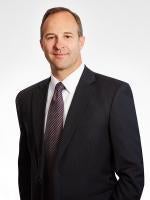Last week, the Federal Circuit decided the case, Association for Molecular Pathology v. USPTO (also known as the “Myriad Genetics case”). The Federal Circuit reviewed two issues from the Southern District of New York’s decision: (a) whether the Plaintiffs have standing to challenge the Defendant’s patents in a declaratory judgment action, and (b) whether the challenged claims are drawn to non-patentable subject matter. In a split panel decision, the majority opinion affirmed in part and reversed in part the decision from the District Court.
The primary issue of interest to those involved in the life sciences industry centered on whether the Federal Circuit would reverse the District Court’s decision that held the challenged claims to be drawn to non-patentable subject matter under 35 U.S.C. § 101. As brief background, the claims at issue include compositions of matter to isolated nucleotide sequences covering two human genes, BRCA1 and BRCA2, and specific mutations in those sequences, as well as diagnostic method claims relating to those sequences. Certain mutations in BRCA1 and BRCA2 are associated with increased risk for developing breast or ovarian cancer.
Much to the relief of the biotechnology industry, the Federal Circuit held that the claims directed to compositions of matter including isolated nucleotides are patent-eligible subject matter under 35 U.S.C. § 101. In arriving at this decision, the Court reasoned that the claimed isolated DNA molecules are “markedly different” and “have a distinctive chemical identity and nature” from the DNA molecules as they exist in nature (e.g., the human genome). The opinion was careful to distinguish “isolated DNA” from “purified DNA” stating that, “[p]urification makes pure what was the same material, but was previously impure. Although isolated DNA must be removed from its native cellular and chromosomal environment, it has also been manipulated chemically so as to produce a molecule that is markedly different from that which exists in the body.” The Court also reasoned that because the U.S. Patent and Trademark Office has been issuing claims to “isolated DNA” molecules for nearly 30 years, any change to the settled expectation that isolated DNA molecules constitute patentable subject matter must come from an act of Congress and not the courts.
As to the method claims, the Federal Circuit affirmed the District Court’s ruling that the method claims reciting only steps of “analyzing” or “comparing” sequences are invalid. These claims recite nothing more than the abstract mental steps needed to compare two nucleotide sequences, and thus fail to recite any transformative step that would meet the "machine or transformation" test under In re Bilski. A single method claim, drawn to a method for screening chemotherapeutic agents, was upheld because it recited active steps that the Court found to meet the “transformation” branch of the Bilski test, including growing transformed cells and determining the growth rate of transformed cells.
The Federal Circuit also affirmed the District Court’s ruling that the Plaintiffs have standing in this case. The Federal Circuit’s analysis here focused on one of the named Plaintiffs, Dr. Harry Ostrer, and his capability and readiness to perform BRCA1/2 clinical diagnostic testing in his research laboratory.
This decision is only the newest step in a journey that is likely to continue for some time as the Plaintiffs are very likely to petition for review of this decision, either by the Federal Circuit en banc or by the Supreme Court.



 i
i

